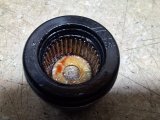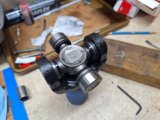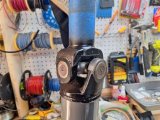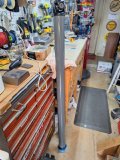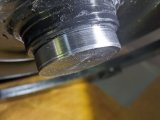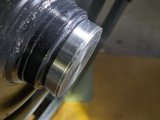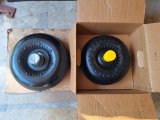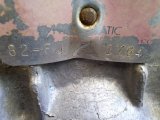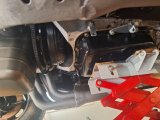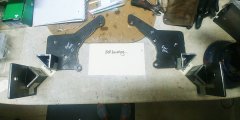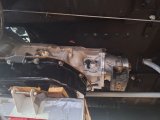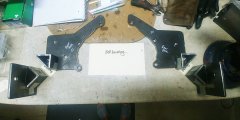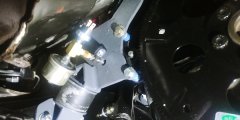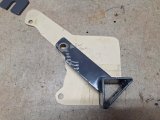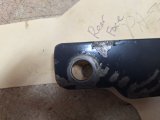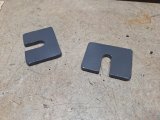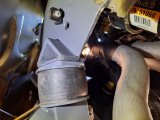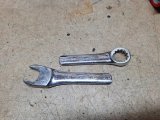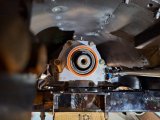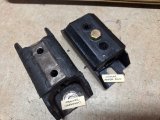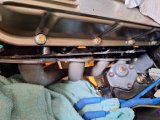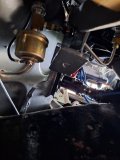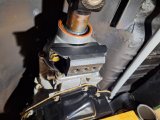Engine and Transmission Mounts......
These engine mounts have eaten my lunch! This comes under 10 steps backwards. I'll try to explain, but it all comes under building cars, expect to re-do things.
In my car, the rear engine mounts are not only primary supports for the drivetrain, but they also are used to set the angle of the drivetrain.
I kept fighting problems trying to get the transmission back into its former location, without the need to modify the crossmember. This was a good setup for about 35 years, with no driveline issues.
It was problematic using the engine hoist to hold the engine as the lift bar would hit the hood before I could get the drivetrain lifter to the proper (original) height. I did not want to remove the hood again, so I decided I would make something to support the engine from below at the rear mounts. This would also help to make small adjustments to get the drivetrain angles within spec.
Back to these pictures for reference - these are the rear engine mount plates as installed.
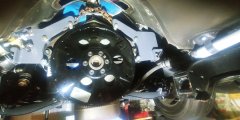
And here's one of the side supports that bolts through the frame. The rear plates sit on top of the rubber bushing.
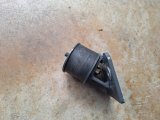
Here's the transmission finally sitting on the crossmember with the new rear mount.
As you can see, plenty of driveshaft clearance, even for the handbrake cabling.
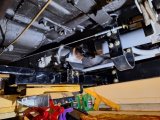
You can see clearance between the driveshaft tube and the handbrake cable equalizer (cables are tensioned).
This is just how it used to be, never any rubbing.
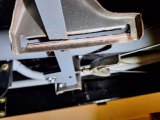
But the problem in using shims to raise the engine height was that there was not going to be much thread left on the rubber bushing after shim and rear plate thickness. So I was essentially trying to fix symptoms and not the root cause of the problem.
This was just a .125 shim, add another .187 for the engine plate, doesn't leave much. And at least a .25 shim was needed.

I realized that I needed to change both side supports for the engine mount plates. They weren't the right angle and they were too low.
Rather than monkey around with the current supports, I decided to make new ones, but this time since the engine was in the car, I wanted to be able to support the engine and still be able to adjust it slightly. This would also allow me to get the side supports right.
Bear with me, I'm only slightly crazy.
So I made an extra vertical bracket for each side. The passenger side has an opening for the starter cable.
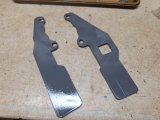
This is the idea. These vertical brackets bolt into the rear engine mount plates and are left in place. They don't interfere with the headers and are above any possible objects on the road. There's a lot of other stuff that would hit first.
These brackets are drilled for attachment to a sturdy wooden support that I made. The wooden support in turn sits on a scissor jack, which is used to adjust height up or down and will retain its position.
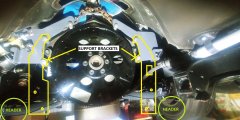
This is the passenger side vertical bracket bolted onto the wooden support.

This is the passenger side vertical bracket bolted onto the wooden support structure.
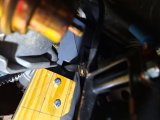
And the entire assembly as a first test on the scissor jack. I've since added a wider base, but even this setup was very solid. Remember also that there is a transmission jack in place along with the rear crossmember and the front engine mounts. The amount of load on this isn't even close to bending stress on the wooden support.
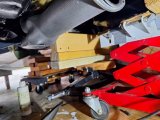
Despite the extra work, this gave me a solid base of support and adjustability.
Hindsight is a wonderful thing - if I had the engine out again, I'd probably make my own side mounts, but it is what it is. The idea is that once I get this stuff squared away, I won't need to mess with it again.

